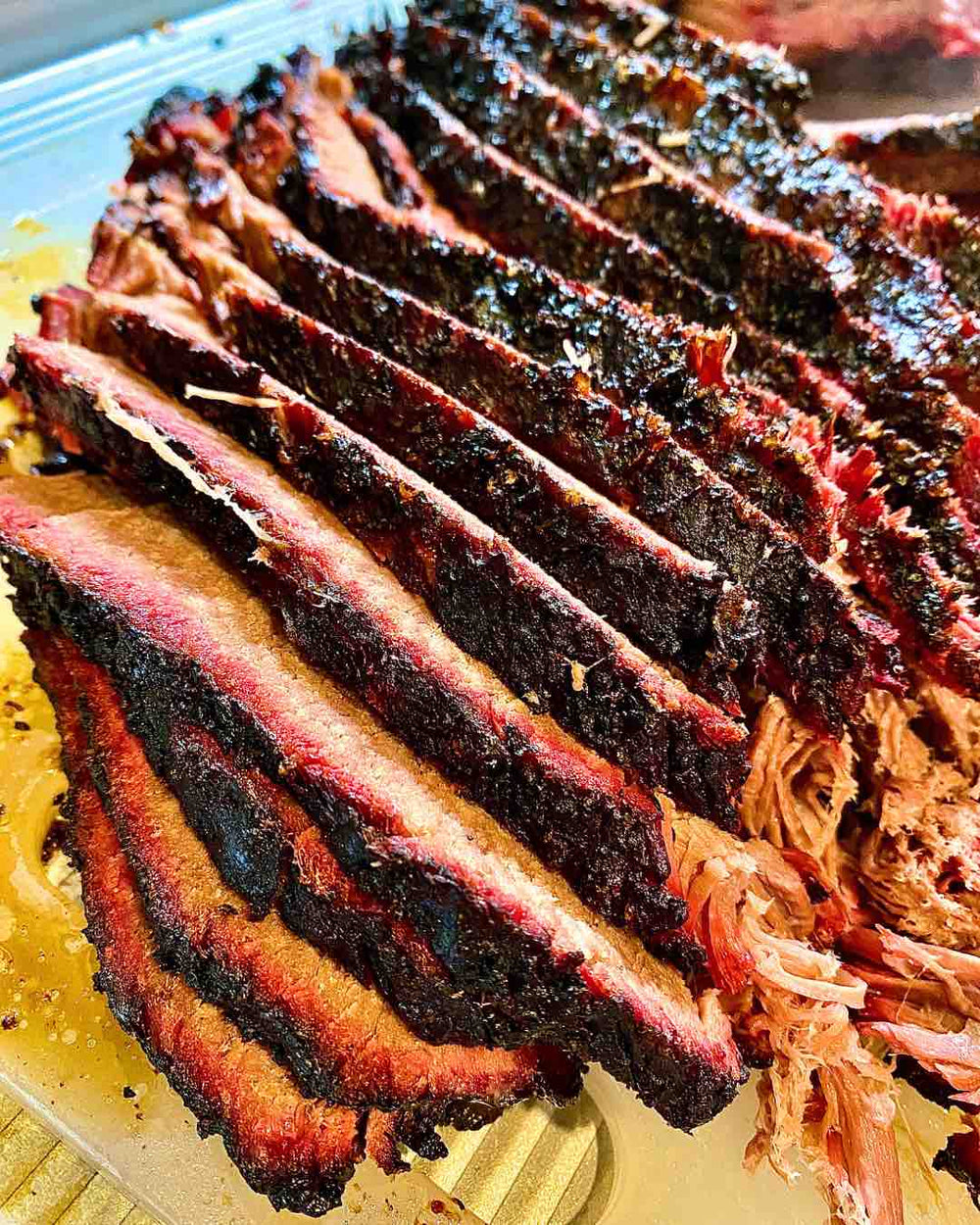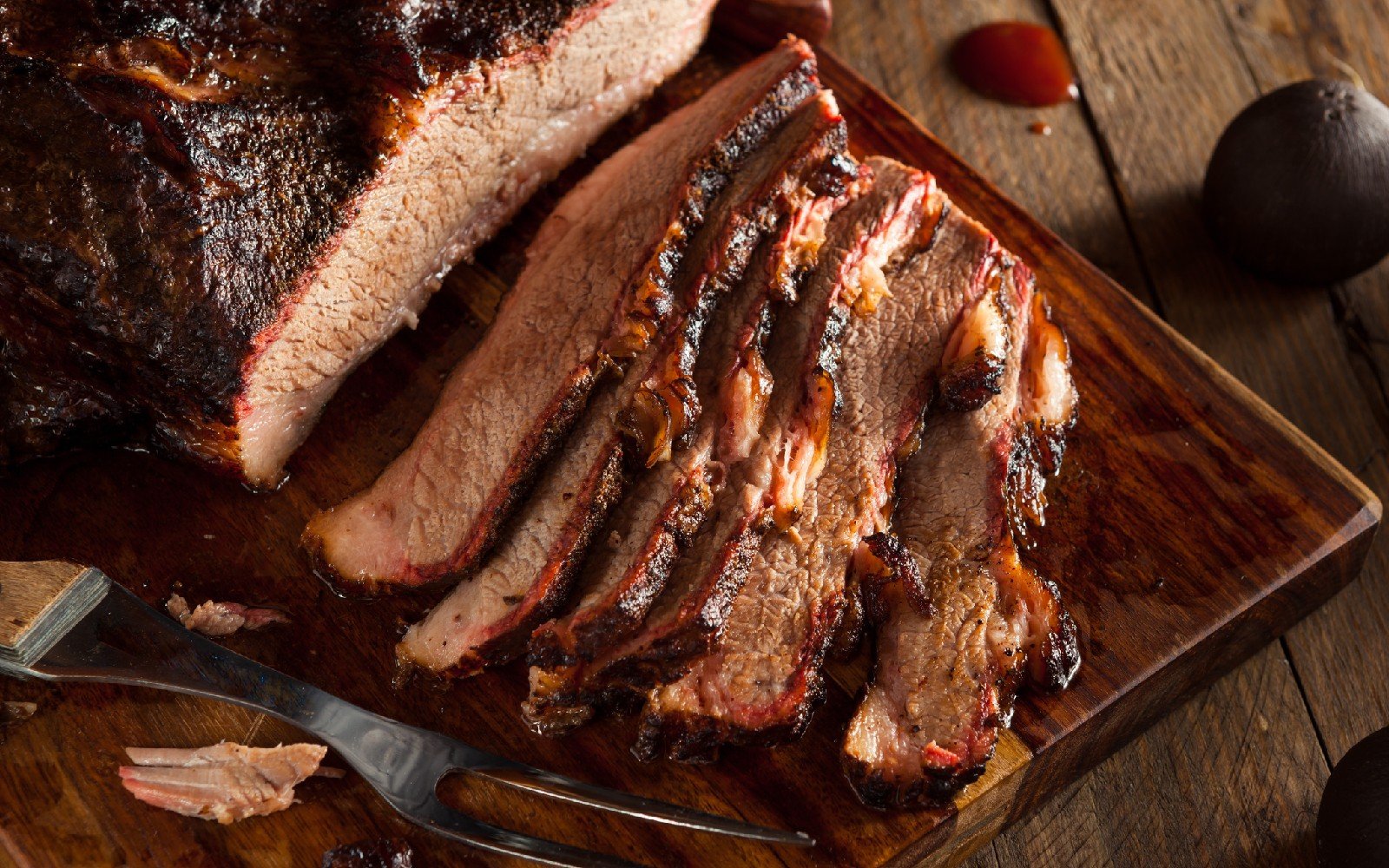
The History and Origin of Brisket
The Evolution of Brisket Across Cultures
Brisket has successfully traversed cultural and societal boundaries, evolving from a Jewish delicacy in Eastern Europe to an iconic American barbecue staple. Its journey began centuries ago within the Jewish community, where it was revered as a traditional kosher food served during significant holidays like Passover and Hanukkah. When Jewish immigrants arrived in the United States in the 19th century, they brought along this cherished tradition, introducing brisket to the culinary landscape of America.
With time, southern ranchers and immigrants exchanged recipes, and brisket began to gain popularity beyond Jewish households. The 1950s marked a pivotal time for brisket, as Black’s Barbecue in Lockhart, Texas, became the first public restaurant to put this cut of meat on its menu. Consequently, brisket became synonymous with Texas culture, celebrated for its smoky flavor and tender texture.
Today, brisket retains its significance in various cultural dishes:
- Jewish Cuisine: Traditionally braised or pot-roasted, brisket remains a festive dish.
- Texas Barbecue: A staple smoked cut, often served with a tangy sauce.
- Korean Cuisine: Used in dishes like yukgaejang, a spicy beef soup, showcasing its versatility.
As brisket has evolved across cultures, it has forged connections between different culinary traditions, revealing its universal appeal.
Cultural Significance in Traditional Dishes
Brisket’s role in traditional dishes goes far beyond mere sustenance; it symbolizes celebration and community. For instance, during Jewish holidays, it serves as a centerpiece, representing family gatherings and joyous occasions. Its rich, flavorful profile aligns perfectly with celebratory meals, emphasizing togetherness.
In Texas, brisket is not just food; it’s a tradition. Barbecue competitions showcase this beloved cut, bringing communities together to celebrate a shared love for great eats. It is often the highlight at annual events, reinforcing its status as a significant cultural artifact in American cuisine.
Overall, brisket intertwines cultural heritage with modern culinary trends, enriching traditions and fostering connections among diverse communities.

Brisket Cut Varieties Around the World
Different Names and Cuts in Various Culinary Traditions
Brisket, while famous in its own right, takes on many forms and names across various cultures. The cut originates from the breast or lower chest of beef or veal, making it exceptionally flavorful yet tough due to the significant connective tissue.
Here are some of the different names and uses of brisket globally:
- U.S.: Often served as smoked brisket, it is a staple in barbecue joints, especially in Texas where it is affectionately referred to as “Texas brisket.”
- Jewish Cuisine: In Jewish households, brisket is commonly braised and served during holidays, referred to simply as “brisket.”
- Korean Cuisine: Known as “chadolbaegi,” brisket is typically thinly sliced and cooked quickly; it stars in dishes like yukgaejang (spicy soup) and jang jorim (braised brisket).
- Italian Cuisine: Brisket slices can be braised and used in sauces or as part of hearty stews.
The variations reflect not just local culinary techniques but also adaptations based on cultural significance, using brisket to create unique and beloved dishes.
Comparison of Brisket Cuts in Different Regions
When it comes to the cuts themselves, brisket is subdivided into different parts that can be found in various culinary traditions:
- Flat Cut: This leaner cut is commonly found in American cuisines and is favored for dishes that require slow cooking.
- Point Cut: Fattier and more marbled, this cut is often preferred by barbecue enthusiasts for its richness and flavor.
Here’s a simple comparison of these cuts:
| Cut Type | Description | Popular Dishes |
|---|---|---|
| Flat Cut | Lean, with less fat | Smoked brisket, corned beef |
| Point Cut | Fattier, more flavor | Burnt ends, braised dishes |
These distinctions reveal how a single cut of meat can take on different roles and flavors depending on regional preparation methods and culinary preferences, showcasing brisket’s versatility in global cuisine.

Brisket in Global Cuisine
Brisket Recipes from Different Countries
Brisket transcends cultural boundaries, showcasing its versatility in various cuisines worldwide. Each country has developed unique recipes that highlight the flavors and textures of this beloved cut.
- United States: Here, particularly in Texas, brisket is often prepared through slow smoking with a rich rub of herbs and spices, resulting in tender, juicy slices served with barbecue sauce.
- Germany: Known as “Boeuf Braise,” brisket is traditionally braised with onions, carrots, and a robust beer or wine base. This hearty dish is usually served with dumplings or potatoes, offering a comforting meal.
- Korea: In Korean cuisine, brisket plays a starring role in dishes like “yukgaejang,” a spicy soup filled with shredded beef and vegetables. The brisket is boiled with spices to infuse flavors, often served with rice or noodles.
- Vietnam: Here, brisket is an essential ingredient in “pho,” a fragrant noodle soup, where it is simmered in broth with herbs, showcasing the cut’s ability to absorb and enhance flavors.
These examples not only highlight brisket’s adaptability but also how it reflects the culinary traditions and tastes of different cultures.
Fusion of Traditional Brisket Dishes in Modern Cuisine
As global cuisines continue to merge, brisket has found its way into innovative dishes that reflect contemporary taste preferences. Chefs are creatively reimagining traditional preparations, combining elements from various cultures to produce exciting new offerings.
- Brisket Tacos: This fusion dish combines the classic Texas brisket but incorporates it into tortillas, topped with fresh salsa and avocado for a delicious twist.
- Brisket Sushi: Some sushi chefs are experimenting with seared brisket, rolling it up with sushi rice and vegetables for a unique take on traditional sushi.
- Brisket Sliders: Incorporating American barbecue styles, small sandwich sliders made with slow-cooked brisket are now common at upscale catering events, often paired with gourmet sauces.
These innovative interpretations reflect the growing trend of fusion cuisine, where traditional dishes are redefined, embracing cultural influences from around the globe. Brisket, with its rich history and adaptability, continues to inspire culinary creativity, merging age-old traditions with modern flair that tantalizes food lovers everywhere.
The Art of Cooking Brisket
Traditional Cooking Methods and Techniques
Cooking brisket is truly an art form, and mastering it requires knowledge of various traditional methods. Each technique brings its own unique flavor and texture, contributing to the rich tapestry of brisket dishes worldwide.
- Smoking: This is perhaps the most iconic method, particularly in American barbecue culture. Pitmasters often smoke the brisket for 1.5 to 2 hours per pound at a consistent temperature of around 225-250°F. This low and slow technique allows the collagen in the meat to break down, resulting in a tender, smoky flavor that is unmatched. It’s important to use quality wood chips, like hickory or oak, to enhance that signature taste.
- Braising: This technique, popular in cuisines like Jewish and German cooking, involves cooking the brisket slowly in liquid. The meat is seared first to develop flavor and then simmered in broth or wine with aromatics until it becomes fall-apart tender. Braising is perfect when you want a rich, sauce-infused brisket to serve alongside potatoes or root vegetables.
- Oven Roasting: An easy indoor method, brisket is seasoned and slow-roasted in the oven. Using a Dutch oven helps maintain moisture, making it ideal for colder months when outdoor cooking isn’t an option.
Popular Seasonings and Marinades for Brisket
To elevate your brisket, the right seasonings and marinades play a crucial role. Here are some popular choices that can transform your dish:
- Dry Rubs: A classic mix includes kosher salt, black pepper, paprika, garlic powder, and onion powder. This simple blend enhances the natural flavors of the beef without overwhelming it.
- Marinades: Consider a marinade that combines soy sauce, Worcestershire sauce, vinegar, and spices. Marinating the brisket overnight helps tenderize the meat and infuse it with delightful flavors.
- Herbal Infusions: Fresh herbs like thyme, rosemary, and bay leaves can be added to braising liquid for an aromatic boost.
Experimenting with these traditional methods and flavor profiles will allow you to discover your favorite brisket preparations, whether you’re hosting a backyard barbecue or celebrating a special occasion with family and friends. Your culinary journey with brisket is sure to be a savory adventure!
Brisket in Pop Culture and Media
Representation of Brisket in Films and TV Shows
Brisket isn’t just a beloved culinary staple; it has carved out its own niche in the world of pop culture. Various films and television shows have spotlighted this delicious cut of meat, often showcasing its significance in family gatherings, barbecues, and cultural celebrations.
For instance, in shows like The Office, the iconic “Brisket Guy” episode reflects the camaraderie and connection that food—specifically brisket—can create among coworkers. These gastronomic moments underline the communal aspect of sharing meals, which resonates deeply with audiences.
Additionally, cooking shows and competitive programs often feature brisket as a centerpiece in barbecue competitions. Chefs showcase their skills in crafting the perfect smoked brisket, with judges eagerly tasting the results. This not only highlights the culinary art of preparing brisket but also elevates its status as a cherished dish.
Brisket’s Influence on Food Trends and Social Media
In today’s digital landscape, brisket has become a social media sensation, inspiring food bloggers and Instagram influencers to share their unique takes on this classic cut. With hashtags like #BrisketLove and #BBQBrisket flooding platforms, food enthusiasts from around the globe have joined the brisket craze.
- Recipe Videos: Platforms like TikTok and Instagram feature quick cooking demonstrations, showcasing creative brisket recipes, from tacos to sandwiches. These bite-sized videos inspire viewers to experiment in their kitchens, resulting in a resurgence of home-cooked brisket meals.
- Fusion Creations: The inventive spirit of social media has also birthed numerous fusion dishes, such as brisket sushi rolls or Asian-inspired brisket bao buns. These innovative recipes have challenged traditional perceptions and expanded the culinary horizon for brisket lovers.
Brisket’s representation in media and its influence on food trends underscore its versatility and enduring popularity. It’s not just a dish; it’s a celebration of heritage, community, and creativity, making it an integral part of both culinary and cultural conversations today.

Brisket Festivals and Celebrations Worldwide
Annual Events Dedicated to Brisket
Brisket has earned its place in culinary celebrations around the globe, especially in the United States, where events dedicated to this flavorful cut of meat draw enthusiasts from near and far. One of the most popular events is the Houston Livestock and Rodeo, held annually in Texas. This event not only highlights rodeo competitions but also features a massive barbecue cook-off, where brisket takes the center stage. Competitors showcase their slow-smoked creations, with judges sampling the tender, juicy results.
Another noteworthy event is the Blue Bonnet BBQ Festival in Texas, which celebrates the art of barbecue with various meat categories, including brisket. Attendees can enjoy tastings, cooking demonstrations, and, of course, the chance to participate in brisket-related contests. Such events serve as a perfect platform for pitmasters and brisket lovers alike to bond over their mutual appreciation for this delicious cut.
Unique Brisket Festivals in Different Countries
While brisket might be synonymous with American barbecues, its global presence is undeniable. Countries around the world have embraced this cut in their culinary festivals. For example, in Israel, the Meat Festival celebrates various preparations of brisket, highlighting its significance in Jewish cultural and religious traditions. Here, attendees indulge in dishes that honor traditions while showcasing modern culinary techniques.
In Korea, the Seollal (Lunar New Year) celebrations feature brisket-based dishes like “yukgaejang,” a spicy beef soup that incorporates tender, flavorful slices of brisket. It’s a cultural staple that emphasizes nostalgia and family gatherings.
Brisket truly transcends borders, connecting communities through shared love for food and rich culinary traditions. From the cook-offs of Texas to festivals across Israel and Korea, brisket remains not just a meal but a symbol of culture and celebration, reminding us of the communal spirit that great food fosters. Whether it’s enjoyed at an annual festival or around family tables, brisket continues to create lasting memories and bring people together.

Leave a Reply